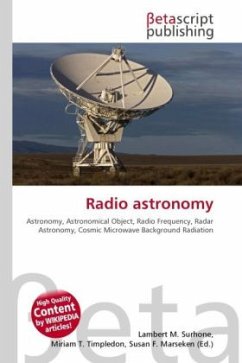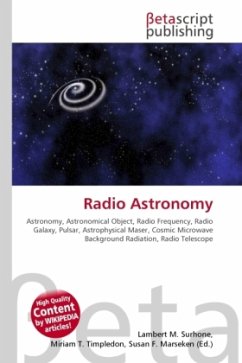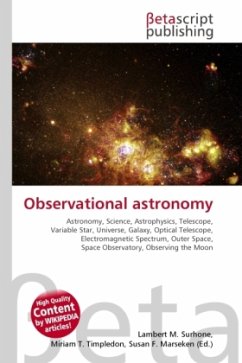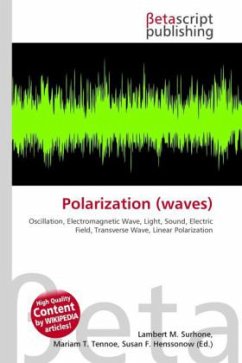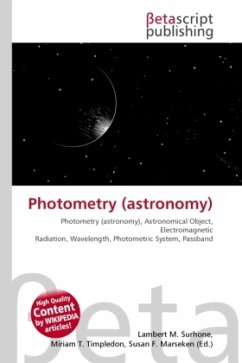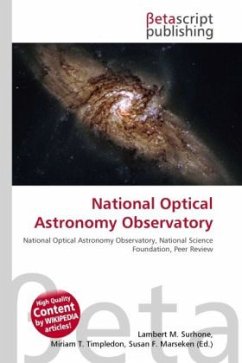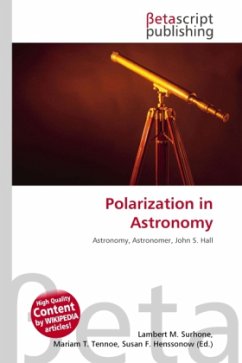
Polarization in Astronomy
Versandkostenfrei!
Versandfertig in 6-10 Tagen
26,99 €
inkl. MwSt.

PAYBACK Punkte
13 °P sammeln!
High Quality Content by WIKIPEDIA articles! Light Polarization is an important phenomenon in astronomy. The polarization of starlight was first observed by the astronomers William Hiltner and John S. Hall in 1949. Subsequently, Jesse Greenstein and Leverett Davis, Jr. developed theories allowing the use of polarization data to trace interstellar magnetic fields. Although the thermal radiation of stars is not appreciably polarized at source, its scattering by interstellar dust imposes polarization on starlight over long distances. Plane polarization of starlight generated at the star itself is ...
High Quality Content by WIKIPEDIA articles! Light Polarization is an important phenomenon in astronomy. The polarization of starlight was first observed by the astronomers William Hiltner and John S. Hall in 1949. Subsequently, Jesse Greenstein and Leverett Davis, Jr. developed theories allowing the use of polarization data to trace interstellar magnetic fields. Although the thermal radiation of stars is not appreciably polarized at source, its scattering by interstellar dust imposes polarization on starlight over long distances. Plane polarization of starlight generated at the star itself is also observed for Ap stars (peculiar A type stars). Both circular and linear polarization of light from the Sun has been measured. Circular polarization is mainly due to transmission and absorption effects in strongly magnetic regions of the Sun's surface. Another mechanism that gives rise to circular polarization is the so called alignment-to-orientation mechanism. Linear polarization in spectral lines is usually created by anisotropic scattering of photons on atoms and ions which can themselves be polarized by this interaction.



